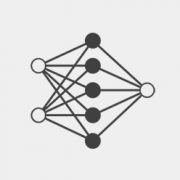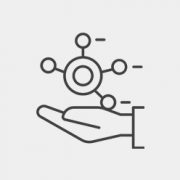We are developing multiple AI solutions to reduce morbidity and mortality for mothers and children in low-resource settings by improving the quality of primary care, and strengthening the first 1,000 days of life.
The first 28 days of life, or the neonatal period, is the most vulnerable time for a child’s survival. Shishu Maapan facilitates anthropometry—the measurement of height, weight, chest circumference, head circumference, and mid-upper arm circumference (MUAC)—during the first 42 days of life. In line with the Ministry of Health and Family Welfare’s (MoHFW) Home-Based New Born Care (HBNC) program, it helps frontline health workers take anthropometric measurements using an Android smartphone.
Conventional methods for monitoring children’s growth face challenges like equipment maintenance, replacing broken or uncalibrated tools, and accurately transcribing data, which raises risks of data tampering. Designed for frontline workers, Shish Maapan tackles these issues with an AI-enabled solution that uses a basic smartphone to capture precise measurements of newborns (0–42 days) with a short video. This tool generates accurate, real-time, and tamper-proof measurements for weight, height, and head, mid-upper arm and chest circumference, making growth monitoring more accessible and reliable in community settings.
It enables FLWs to take videos with basic camera requirements of 30 FPS and a 5 MP camera, making it functional on old smartphones with limited capabilities. Additionally, videos are allowed to be uploaded in segments, facilitating access and usage in areas with patchy network coverage for ASHAs. The text-to-speech feature simplifies tasks like consent collection, making the process easier for workers with varying literacy levels and tech familiarity. The application currently supports Hindi and English, and efforts are underway to enhance its language capabilities.
ADOPTION
Since June 2024, Shishu Maapan has been deployed in the Union Territory of Dadra and Nagar Haveli and Daman and Diu.

“I’m proud to be a part of the Anthropometry solution as it has the potential to make a significant impact, leading to a reduction in infant morbidity and mortality. Estimating the weight of a baby from a short video is a challenging and stimulating computer vision problem. Despite challenges in the social sector, the opportunity to create something valuable remains a solid motivating factor. Working with an interdisciplinary team of program and product experts and like-minded engineering and ML folks is a cherry on the top.”
– Makarand Tapaswi, ML Scientist

Wadhwani AI is a program of the AI Unit of the Lords Education and Health Society (LEHS)
© 2025 Wadhwani AI
ROLES AND RESPONSIBILITIES
An ML Engineer at Wadhwani AI will be responsible for building robust machine learning solutions to problems of societal importance; usually under the guidance of senior ML scientists, and in collaboration with dedicated software engineers. To our partners, a Wadhwani AI solution is generally a decision making tool that requires some piece of data to engage. It will be your responsibility to ensure that the information provided using that piece of data is sound. This not only requires robust learned models, but pipelines over which those models can be built, tweaked, tested, and monitored. The following subsections provide details from the perspective of solution design:
Early stage of proof of concept (PoC)
Late PoC
This is early to mid-stage of AI product development
Post PoC
Responsibilities during production deployment
We realize this list is broad and extensive. While the ideal candidate has some exposure to each of these topics, we also envision great candidates being experts at some subset. If either of those cases happens to be you, please apply.
DESIRED QUALIFICATIONS
Master’s degree or above in a STEM field. Several years of experience getting their hands dirty applying their craft.
Programming

ROLES AND RESPONSIBILITIES
As an ML Scientist at Wadhwani AI, you will be responsible for building robust machine learning solutions to problems of societal importance, usually under the guidance of senior ML scientists. You will participate in translating a problem in the social sector to a well-defined AI problem, in the development and execution of algorithms and solutions to the problem, in the successful and scaled deployment of the AI solution, and in defining appropriate metrics to evaluate the effectiveness of the deployed solution.
In order to apply machine learning for social good, you will need to understand user challenges and their context, curate and transform data, train and validate models, run simulations, and broadly derive insights from data. In doing so, you will work in cross-functional teams spanning ML modeling, engineering, product, and domain experts. You will also interface with social sector organizations as appropriate.
REQUIREMENTS
Associate ML scientists will have a strong academic background in a quantitative field (see below) at the Bachelor’s or Master’s level, with project experience in applied machine learning. They will possess demonstrable skills in coding, data mining and analysis, and building and implementing ML or statistical models. Where needed, they will have to learn and adapt to the requirements imposed by real-life, scaled deployments.
Candidates should have excellent communication skills and a willingness to adapt to the challenges of doing applied work for social good.
DESIRED QUALIFICATIONS
